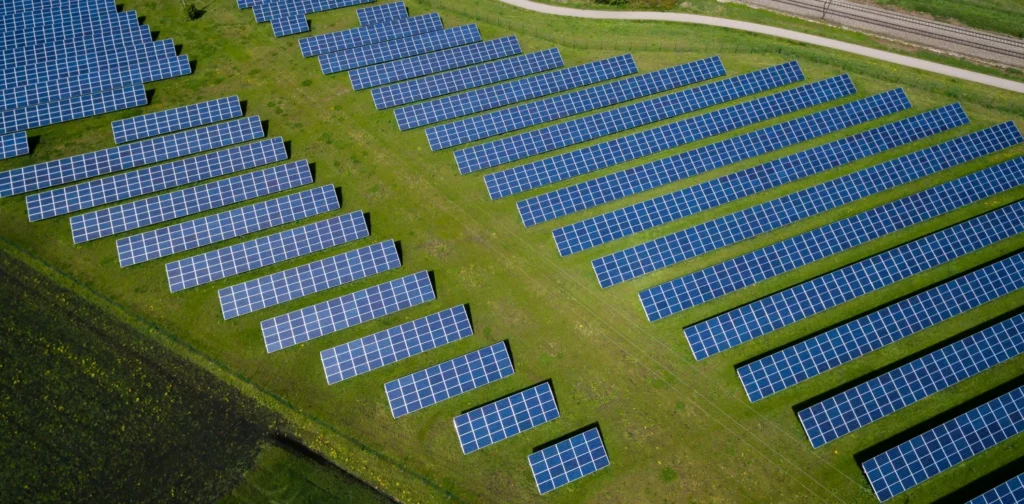The Rise of Renewable Energy Overtakes Coal as Electricity Source

Photo: Andreas Gücklhorn in Unsplash.
The world continues to grapple with the escalating threat of climate change. Meanwhile, fossil fuel production remains high, driving up carbon emissions and worsening global warming. Yet amid these challenges, a hopeful shift is underway. Several countries are rapidly expanding renewable energy usage, opening the door to a new era powered by solar and wind.
Global Renewable Energy Overtakes Coal
For the first time, renewable energy overtook coal as the world’s primary source of electricity in the first half of 2025. According to a report by Ember, global electricity demand grew by 2.6 %, and this increase was entirely met by rises in solar and wind output. This increase pushed renewables’ share from 32.7% to 34.4%. Meanwhile, coal generation fell from 34.2% to 33.1%.
The drop in coal use was particularly notable in China and India. China boosted its solar generation by 43% (168 TWh) and wind by 16% (79 TWh), while cutting fossil‑fuel‑based electricity by 2% (56 TWh). Meanwhile, India increased its solar output by 25% (17 TWh) and wind by 29% (11 TWh), enabling a decline of approximately 3.1% (22 TWh) in coal generation.
Regional Gaps in Renewable Energy Progress
While global renewable energy continues to grow, the pace of transition differs across regions. In the United States, electricity demand rose faster than renewable energy output, leading to a 17% rise in coal generation in the first half of the year. The International Energy Agency (IEA) has also cut its forecast for the country’s renewable growth this decade from 500 GW to 250 GW by 2030, reflecting slower progress due to policy changes and project delays.
Across Europe, renewable progress slowed as weaker wind and hydropower performance forced greater reliance on fossil fuels. Gas generation rose by 14% and coal by 1.1%, even as solar power continued to grow. These fluctuations highlight the region’s vulnerability to weather patterns and the need for stronger grid resilience and storage capacity.
Bridging the Global Renewable Energy Divide
Despite record growth in renewable energy capacity, significant regional disparities highlight an urgent need for equitable expansion to meet global net-zero goals. Over 70% of new renewable capacity emerged in Asia, led by China, whereas Africa and parts of Latin America lag behind due to financial, infrastructural, and policy barriers.
Bridging this gap requires scaling access to finance, strengthening local policy frameworks, and enhancing technology transfer. Initiatives to mobilize capital and support capacity-building across vulnerable areas must be strengthened and implemented with the just transition principle at its core. With stronger, accelerated, and equitable progress, the world could move closer to a net-zero future powered by clean, affordable energy.
Editor: Nazalea Kusuma & Kresentia Madina

Join Green Network Asia – An Ecosystem of Shared Value for Sustainable Development
Support Green Network Asia’s movement to create positive impact for people and the planet through public education and multi-stakeholder advocacy on sustainability-related issues and sustainable development.
Become a Member Now

 Dead Zone: The Declining Oxygen Levels in Rivers
Dead Zone: The Declining Oxygen Levels in Rivers  COP30: A Critical Moment to Adopt Climate Adaptation Indicators
COP30: A Critical Moment to Adopt Climate Adaptation Indicators  How Citizen Science Can Help Address Plastic Pollution
How Citizen Science Can Help Address Plastic Pollution  Luxury Tourism Threatens the Maasai Mara
Luxury Tourism Threatens the Maasai Mara  South Korea’s Mandate on Obligatory Use of Sustainable Aviation Fuel (SAF)
South Korea’s Mandate on Obligatory Use of Sustainable Aviation Fuel (SAF)  New Zealand Takes a Step Against the Oceanic Degradation of Hauraki Gulf
New Zealand Takes a Step Against the Oceanic Degradation of Hauraki Gulf